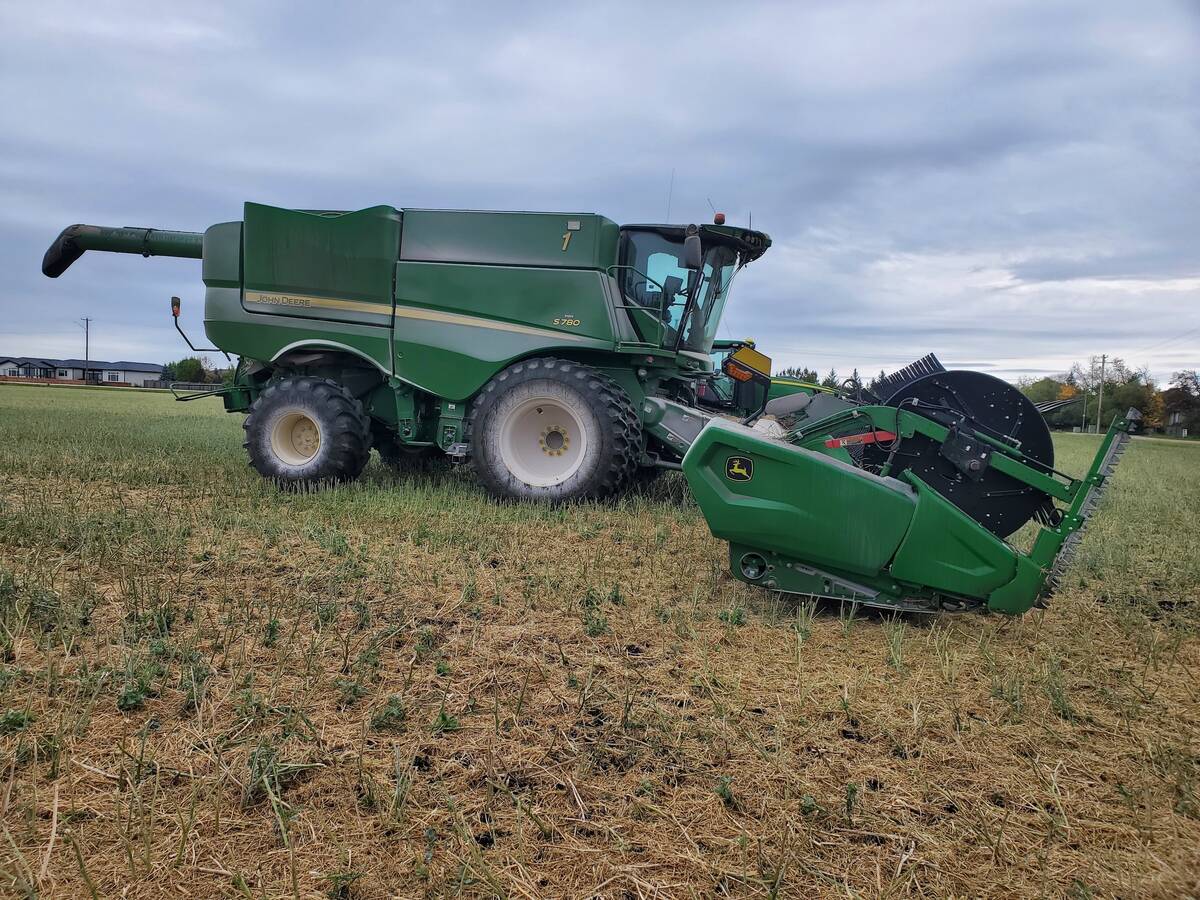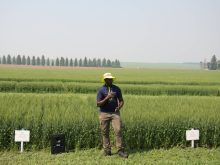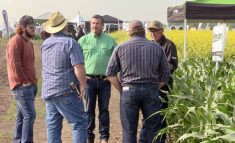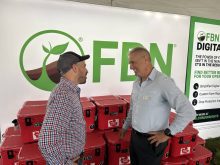Over the last year, farmers and agriculture industry groups have complained that the government has come up with a policy on fertilizer emissions without the necessary data and information to develop a good policy.
As an example, Fertilizer Canada, in a submission to the government, said federal bureaucrats don’t consider the on-farm practices that reduce emissions when they calculate the greenhouse gas emissions associated with nitrogen fertilizer.
“Such as the use of nitrification inhibitors and polymer coatings and other practices that fall under the 4R (right rate, right source, right time and right place) Nutrient Stewardship framework. The current adoption levels of 4R practices, which are substantial, are not accounted for within current modeling.”
Read Also

Powdery mildew can be combine fire risk
Dust from powdery mildew can cause fires in combines.
The federal government has set a target of cutting nitrous oxide (N20) emissions connected to nitrogen fertilizer by 30 percent by 2030. Nitrous oxide is a powerful greenhouse gas. One kilogram of N20 released into the atmosphere is the equivalent of 300 kilograms of carbon dioxide.
In 2019, the feds estimated that synthetic fertilizers caused 12.75 million tonnes of emissions (in CO2 equivalents) and want farmers to cut those emissions by 3.8 million tonnes.
It’s correct to say the federal government isn’t using all the information to make its calculations, but farmers could be part of the solution by providing more data about fertilizer and fertilizer use, said Claudia Wagner-Riddle, a University of Guelph professor who specializes in agriculture and greenhouse gas emissions.
With all the data collected on farms across Canada through sensors, monitors, computer software and other means, there must be a way to use that on-farm data and get a clearer picture of fertilizer use and emissions from fertilizer, she said.
“It seems to me… we have all this information but when we go to calculate emissions, we are stuck in making some huge assumptions… just because the data isn’t available,” she said.
Wagner-Riddle added she doesn’t know enough about the Internet of Things and big data to understand how the on-farm fertilizer data could be collected and shared. But it’s a direct way to measure farmer progress on N2O emissions from nitrogen fertilizer.
“You could use that data, in a model, to estimate what the emissions currently are (in Canada)…. Then track are we moving towards the reductions? How well are we doing to reach that target (of 30 percent)?” she said. “I’ve interacted enough with people on the National Inventory Report. What they would say is, we need this kind of data across the country for all the types of crops.”
Karen Proud, president and chief executive officer of Fertilizer Canada, also said that more data is needed around fertilizer and beneficial management practices that reduce N2O emissions.
Fertilizer Canada already conducts a survey on grower knowledge and adoption of 4R practices, including best management practices that farmers are using on their crops.
That information is useful, but more would be better.
“We fully support collecting as much data, as we possibly can, on fertilizer use,” she said.
“Our survey is in some ways limited to the amount we can fund to do these sorts of things…. We would really like to enhance the survey and broaden it. I agree. The more data we can collect the better we are.”
The question, though, is how to collect that data. Could it be done with something other than a survey? Maybe collect data on fertilizer use directly from the farm?
“A lot depends on the sophistication of the farm. Some farms… it’s all about precision agriculture, where they know what parts of their field need what (amount) of nutrients. And that data they would likely retain. So, year over year, they could see how things are developing. And they do soil testing. And all of that is captured,” Proud said.
“Other farmers don’t have that same level of data collection…. They may not have the same level of precision. In some cases, the data probably does exist, either with the farmer or (where) they’re getting their crop advice.”
Proud isn’t endorsing or advocating for such an approach.
But it is important to improve data on how fertilizer is applied in Canada because the ag industry needs to show policy makers that farmers are taking steps to cut greenhouse gas emissions.
“The problem with this current round of policies, around emission reductions, is that the on-farm practices weren’t taken into account… in how the government was calculating the level of emissions…. Without that data and knowledge, it’s a guessing game,” Proud said.
One of the big holes in data collection is how much fertilizer is applied in Canada.
For now, the federal government uses data on fertilizer sales to estimate the amount of fertilizer applied to farmland.
“They’re not going farm by farm to find out if the fertilizer sold is actually being used,” Proud said.
To remedy the data collection problem, Fertilizer Canada has asked the government to help with its farmer survey on fertilizer use.
The feds did support the Fertilizer Canada survey for three years, but that funding stopped in 2017.
“We’ve most recently asked for $5 million over the next eight years to support the continuation and expanding of our fertilizer use survey,” Proud said.
Fertilizer Canada already partners with several farm groups on the survey, but the data might carry more weight if government was part of it.
“We’re often criticized as industry groups, that the data comes from industry,” she said.
“We would welcome a government partner… to show that the government has a stake in it.”
The discussion around data and fertilizer emissions will continue Oct. 14 when the Smart Prosperity Institute hosts an online workshop on the fertilizer emissions reduction target — focusing on data and measurement.
The workshop is scheduled to run from 1-4 p.m. ET.


















